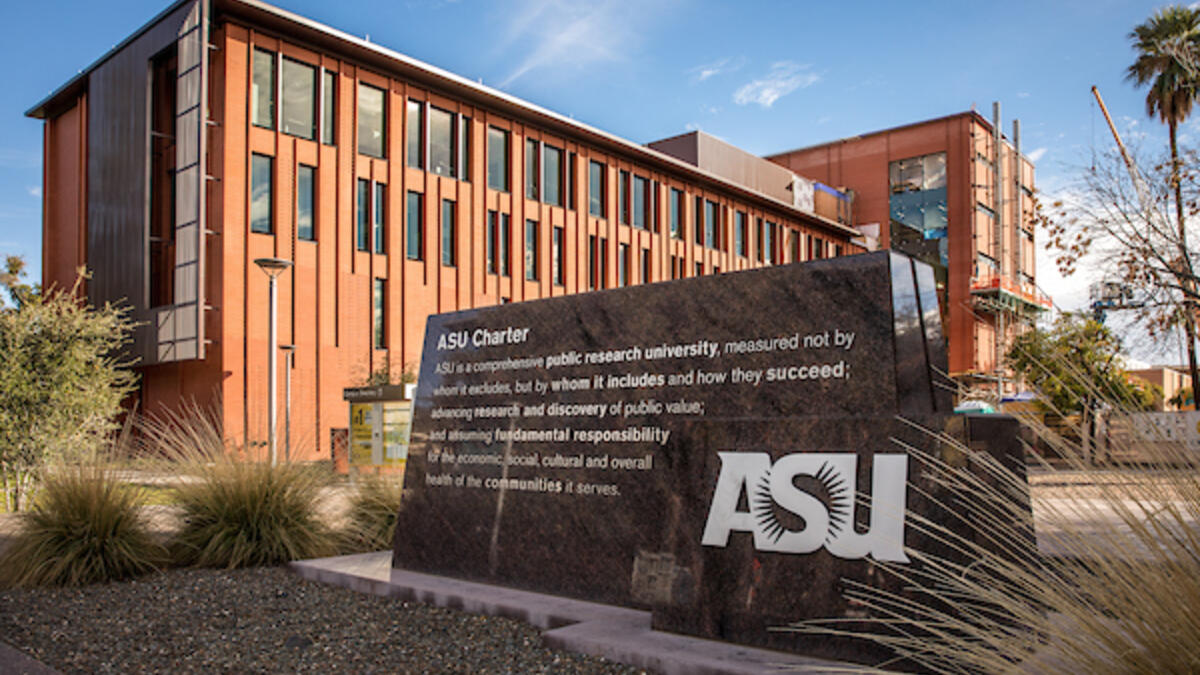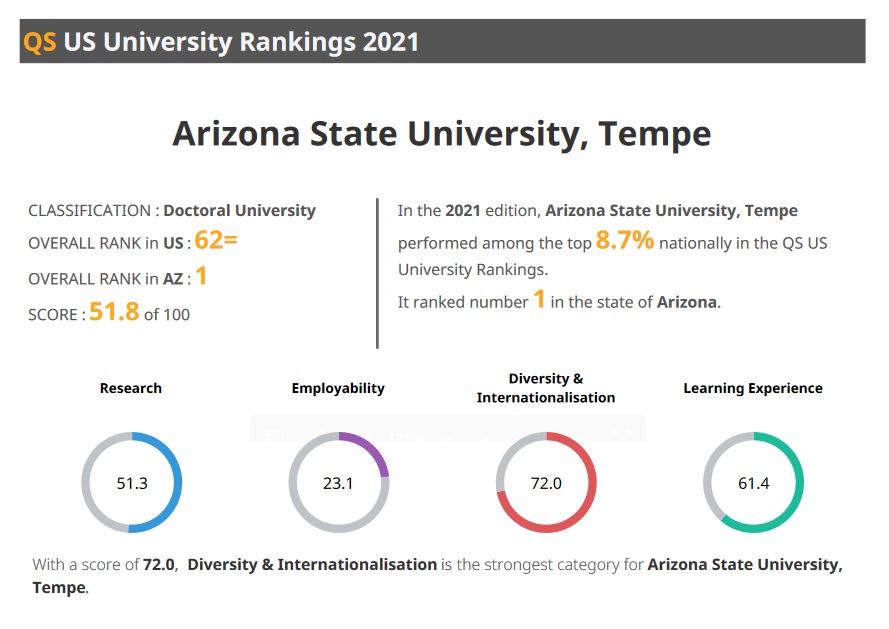ASU moves up nearly 30 spots in QS World University Rankings’ list of top US institutions

QS World University Rankings has released its list of more than 300 of the top universities in the United States, with Arizona State University moving up nearly 30 spots to No. 62 from last year’s position at No. 91. ASU also ranked No. 1 in the state, ahead of both Northern Arizona University and the University of Arizona.
QS (Quacquarelli Symonds) is a leading provider of services, analytics and insight to the global higher education sector. The QS World University Rankings portfolio launched in 2004 and has since grown to become one of the world’s most popular sources of comparative data about university performance. This is the second year for its U.S.-focused rankings, which are based on a methodology that looks at four key indicators: research, learning experience, employability, and diversity and internationalization.
“On behalf of the academic enterprise at ASU, I am proud of our students and faculty, whose scholarship and achievements are critical to our success,” said Executive Vice President and University Provost Mark S. Searle.
“Among the factors considered, ASU scored well on the breadth of our research partners around the world, the number of Fulbright recipients at ASU and the overall academic reputation of the institution. Additionally, ASU has created a student-centered experience that supports the academic goals of an increasingly diverse student body. ASU’s improved ranking is a proof point of our growing global reputation as a top university.”
This year’s ranking of universities from the U.S. includes 351 institutions, up from 302 last year, with 74 new entrants overall. The goal of the rankings is to provide not only international students with new and more granular insights when deciding on a study destination in the U.S., but also to offer domestic students a fresh outlook on their home institutions.
According to QS World University Rankings’ flagship website, TopUniversities.com, the home of their rankings, “These universities, many known as Public Ivies, demonstrate impressive research credentials on par with some of the greatest academic powerhouses in the world, while offering an excellent learning environment, with many showing a great commitment to diversity, inclusion, gender equality and internationalization.”
Of the four key indicators, ASU ranked highest in diversity and internationalization (putting it at No. 32 nationally for that indicator), followed by learning experience, research and employability.
View a complete breakdown of ASU’s rankings.
More University news

ASU President Crow, 'NeoBio' honored at international celebration of innovation
ASU President Michael Crow and NeoBio, the university’s groundbreaking effort to revolutionize biology education, were among the…

‘The time to change the future is now’
More than two decades ago, Arizona State University reimagined higher education by evolving into a university focused on…

3 ASU students earn Goldwater Scholarships for STEM research excellence
Three Arizona State University students have been named Goldwater Scholars for 2025, placing them among the nation’s most…


